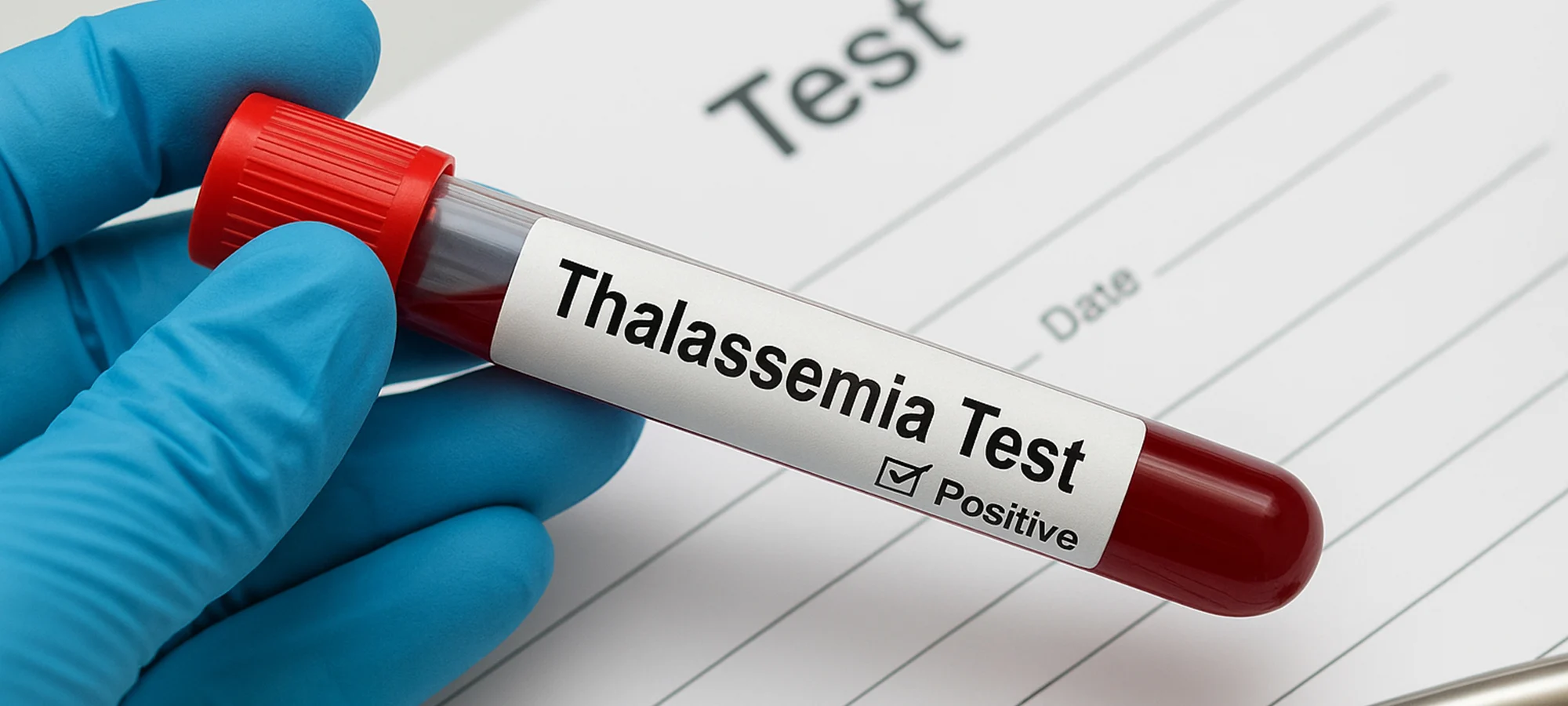The journey of pregnancy is filled with a beautiful mix of excitement and anticipation. As you navigate these precious months, your doctor will recommend various tests to ensure the well-being of both you and your growing baby. One of the first and most important screenings you'll encounter is the Double Marker Test. This simple blood test, usually done in the first trimester, offers early insights into your baby's development and can bring you peace of mind.
This guide is designed to walk you through everything you need to know about the Double Marker Test, from what it is to how to understand the results. We want you to feel informed and empowered as you make decisions for your family's future.
What Exactly is the Double Marker Test?
Think of the Double Marker Test as an early peek into your baby's genetic health. It's a non-invasive prenatal screening, which means it's completely safe for both you and your little one. The test, also known as a dual marker or maternal serum screening, involves a simple blood draw from the mother's arm.
This blood sample is then analysed for two key substances produced by the placenta:
- Free Beta-Human Chorionic Gonadotropin (Free β-hCG): A hormone that plays a vital role in pregnancy.
- Pregnancy-Associated Plasma Protein-A (PAPP-A): A protein crucial for placental development.
By measuring the levels of these two markers, along with considering factors like your age and the baby's gestational age, your doctor can assess the risk of certain chromosomal abnormalities.
Why is the Double Marker Test So Important?
The Double Marker Test is a valuable tool in early pregnancy care for several reasons:
- Early Detection: It provides an early indication of the risk for chromosomal conditions like Down syndrome (Trisomy 21), Edwards syndrome (Trisomy 18), and Patau syndrome (Trisomy 13). This early insight allows you and your doctor to plan for any necessary next steps.
- Completely Safe: Since it only requires a blood sample from you, there is no risk to your baby.
- Informed Decision-Making: The results help you and your healthcare provider make informed decisions about further diagnostic testing.
- Peace of Mind: For most parents, a low-risk result brings a sense of reassurance and allows them to enjoy the rest of their pregnancy with less anxiety.
The Double Marker Test Procedure: What to Expect
The process for the Double Marker Test is straightforward and usually takes place between the 9th and 13th weeks of pregnancy. Here's a simple breakdown of what happens:
- Blood Sample: A small sample of your blood will be taken from a vein in your arm.
- Lab Analysis: Your blood sample is sent to a laboratory to measure the levels of Free β-hCG and PAPP-A.
- Risk Calculation: The lab combines these results with your age, weight, and the precise gestational age of your baby (often determined by an ultrasound) to calculate a risk score.
- Combined Screening: For the most accurate results, the Double Marker Test is often done in conjunction with a Nuchal Translucency (NT) scan. The NT scan is an ultrasound that measures the clear tissue at the back of your baby's neck.
Understanding Your Double Marker Test Results
Your results will be presented as a risk ratio, which might look something like 1:1000 or 1:200. This ratio represents the probability of your baby having a chromosomal abnormality.
- Low Risk (Screen Negative): A result like 1:1000 means that for every 1000 pregnancies with similar results, one baby might have the condition. This is considered a low-risk result. A ratio of 1:250 or higher is generally considered low risk.
- High Risk (Screen Positive): A result like 1:200 indicates a higher probability. It's important to remember that a high-risk result is not a diagnosis. It simply means that further, more definitive testing may be recommended.
Several factors can influence the results, including:
- Maternal Age: The risk of certain chromosomal abnormalities increases with maternal age.
- Gestational Age: The timing of the test is crucial for accuracy.
- Multiple Pregnancies: Carrying twins or more can affect the marker levels.
- Nuchal Translucency (NT) Measurement: The result from the NT scan is a key part of the overall risk assessment.
Preparing for Your Double Marker Test
One of the great things about the Double Marker Test is that it requires very little preparation:
- Timing is Key: The test is most accurate when performed between the 9th and 13th week of pregnancy.
- No Fasting Needed: You can typically eat and drink as you normally would before the test.
- Coordinate with Your Ultrasound: It's often best to schedule your blood draw around the same time as your NT scan.
- Share Your History: Be sure to inform your doctor about your medical history, any previous pregnancies, and any medications you are taking.
Benefits and Limitations: A Balanced View
Benefits:
- Early and Safe Screening: It allows for the early detection of potential risks without any harm to you or your baby.
- Guides Next Steps: It helps determine if more invasive diagnostic tests, like amniocentesis or chorionic villus sampling (CVS), are needed.
- Emotional Reassurance: A low-risk result can provide significant peace of mind.
Limitations:
- It's a Screening, Not a Diagnosis: The test only assesses risk; it cannot definitively diagnose a condition.
- Possibility of False Results: There is a chance of false positives (a high-risk result when the baby is healthy) and false negatives (a low-risk result when a condition is present).
- Accuracy Depends on Timing: Incorrect dating of the pregnancy can affect the accuracy of the results.
Frequently Asked Questions
1. What if my Double Marker Test result is positive (high-risk)?
A high-risk result can be unsettling, but it is not a diagnosis. Your doctor will discuss the results with you and may recommend further diagnostic tests, such as Non-Invasive Prenatal Testing (NIPT), amniocentesis, or Chorionic Villus Sampling (CVS), to get a definitive answer.
2. What does a negative (low-risk) Double Marker Test result mean?
A low-risk result is very reassuring and indicates a low probability of the screened chromosomal abnormalities.
3. Is the Double Marker Test 100% confirmatory?
No, the Double Marker Test is not a 100% confirmatory test. It is a screening tool designed to assess the probability or risk of chromosomal abnormalities. The test identifies pregnancies that have a higher chance of conditions like Down syndrome, but it does not provide a definitive diagnosis. A high-risk result does not mean your baby has a genetic disorder, and a low-risk result doesn't entirely rule one out. Confirmatory diagnostic tests, such as amniocentesis, are needed to get a conclusive answer.
4. How is the Double Marker Test different from the Triple or Quadruple Marker Test?
The Double Marker Test is performed in the first trimester and measures two markers. The Triple and Quadruple Marker Tests are done in the second trimester and measure additional markers to screen for other conditions, including neural tube defects.
Your Journey, Your Decisions
The Double Marker Test is an important early step in your prenatal care journey. It provides valuable information that can help you and your healthcare team make the best decisions for the health of your baby. Remember, you are not alone in this. Your doctor and genetic counsellors are there to guide you through the process and help you understand your results.
Disclaimer: This article is for informational purposes only and is not a substitute for professional medical advice. Please consult with a qualified healthcare provider for any health concerns or before making any decisions related to your health or treatment.











